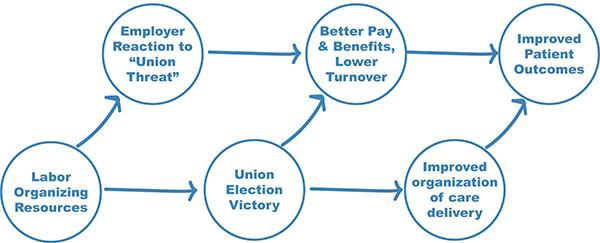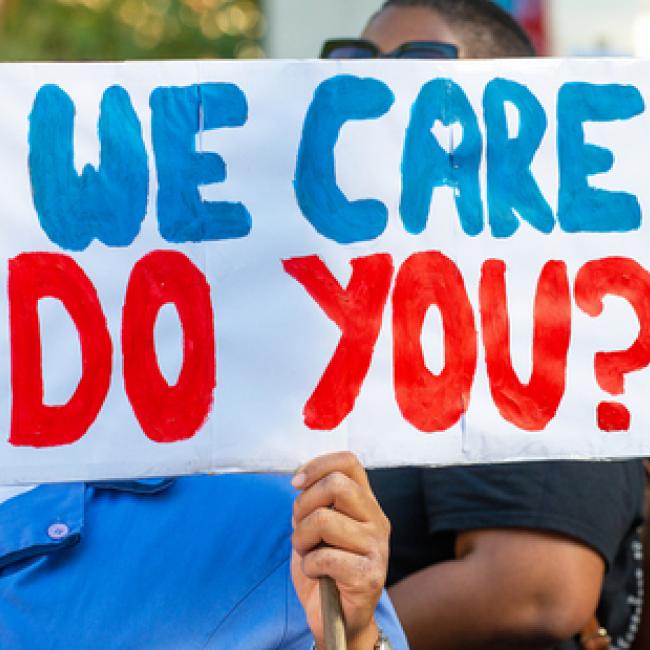Project Summary
The project team is evaluating the causal impact of labor organizing on health and labor market outcomes in the health care sector. In partnership with a labor union, the investigators plan to randomize efforts to unionize health care facilities and implement mixed methods data collection around these efforts to obtain the first ever randomization-based causal effects of labor organizing within the health care sector.
Research Questions/Aims
- What is the effect of labor organizing on care outcomes and workers’ labor market outcomes within health care facilities?
- What is the effect of labor organizing on patterns of communication and decision-making within health care facilities?
- To what extent does the effect of labor organizing on patient, worker, and organizational outcomes run through a union election victory and collective bargaining agreement?
- How are patient outcomes related to the sequencing of a union election campaign?
Actionability
- Generate evidence for policymakers on the impact of labor organizing and unionization on patient outcomes, labor market outcomes, and the relationship between the two.
Outcomes

The theory of change is that the process of labor organizing will lead to changes in the wages and benefits of health care workers, which will improve patient outcomes by both changing the composition of the workforce and by making the same workers more productive; and that labor organizing will also (through unionization) lead to changes in the organization of care, independent of changes in wages and benefits, which also facilitate improved patient care, such as improving the formal and information processes by which information is communicated, leveling organizational hierarchies such that workers’ voices are increasingly included in decision-making, reducing staffing ratios, and increasing workers’ access to the tools they need to do their jobs safely and well. The research team will measure several patient outcomes, including depressive symptoms and daily physical activity, as well as a range of clinical diagnostic outcomes.
Methodology
The project team will implement a randomization protocol and use the randomization to estimate intent-to-treat and local average treatment effects. The union partner will follow the randomization and provide “organizing resources” to half of these facilities as “treatment” and delay these resources for the other half (“control”) until after the study. The researchers will measure the effects of this “organizing treatment” on quantitative indicators of care quality, as well as labor market outcomes. Qualitative indicators will be captured through longitudinal ethnographic interviews with workers within treatment and control homes.

The Trustees of Columbia University in the City of New York
Temi